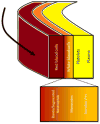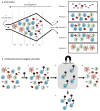CAR-T Cell Therapies From the Transfusion Medicine Perspective
- PMID: 27067907
- PMCID: PMC4914456
- DOI: 10.1016/j.tmrv.2016.03.001
CAR-T Cell Therapies From the Transfusion Medicine Perspective
Abstract
The use of chimeric antigen receptor (CAR)-T cell therapy for the treatment of hematologic malignancies has generated significant excitement over the last several years. From a transfusion medicine perspective, the implementation of CAR-T therapy as a potential mainstay treatment for not only hematologic but also solid-organ malignancies represents a significant opportunity for growth and expansion. In this review, we will describe the rationale for the development of genetically redirected T cells as a cancer therapeutic, the different elements that are required to engineer these cells, as well as an overview of the process by which patient cells are harvested and processed to create and subsequently validate CAR-T cells. Finally, we will briefly describe some of the toxicities and clinical efficacy of CAR-T cells in the setting of patients with advanced malignancy.
Keywords: Adoptive immunotherapy; Cell processing; Gene transfer; Leukapheresis; T cells.
Copyright © 2016 Elsevier Inc. All rights reserved.
Conflict of interest statement
Conflict of interest
MVM and DLS are inventors on issued patents and/or patent applications related to the design, manufacture, and use of CAR T cells; patents are held by the University of Pennsylvania and/or Novartis.
Figures



Similar articles
-
Adoptive therapy with CAR redirected T cells for hematological malignancies.Sci China Life Sci. 2016 Apr;59(4):370-8. doi: 10.1007/s11427-016-5036-3. Epub 2016 Mar 22. Sci China Life Sci. 2016. PMID: 27009302 Review.
-
Promises and limitations of nanoparticles in the era of cell therapy: Example with CD19-targeting chimeric antigen receptor (CAR)-modified T cells.Int J Pharm. 2017 Nov 5;532(2):813-824. doi: 10.1016/j.ijpharm.2017.07.075. Epub 2017 Jul 29. Int J Pharm. 2017. PMID: 28764981
-
[Chimeric antigen receptor T cell (CAR-T) therapy for refractory/relapsed hematological malignancy].Rinsho Ketsueki. 2018;59(10):1948-1954. doi: 10.11406/rinketsu.59.1948. Rinsho Ketsueki. 2018. PMID: 30305496 Review. Japanese.
-
Hurdles of CAR-T cell-based cancer immunotherapy directed against solid tumors.Sci China Life Sci. 2016 Apr;59(4):340-8. doi: 10.1007/s11427-016-5027-4. Epub 2016 Mar 11. Sci China Life Sci. 2016. PMID: 26965525 Review.
-
[Current Status and Challenges of CAR-T Immunotherapy in Hematologic Malignancies -Review].Zhongguo Shi Yan Xue Ye Xue Za Zhi. 2018 Apr;26(2):626-630. doi: 10.7534/j.issn.1009-2137.2018.02.054. Zhongguo Shi Yan Xue Ye Xue Za Zhi. 2018. PMID: 29665944 Review. Chinese.
Cited by
-
Chimeric Antigen Receptor T-cell (CAR T) Therapy for Hematologic and Solid Malignancies: Efficacy and Safety-A Systematic Review with Meta-Analysis.Cancers (Basel). 2019 Jan 7;11(1):47. doi: 10.3390/cancers11010047. Cancers (Basel). 2019. PMID: 30621018 Free PMC article. Review.
-
Novel CS1 CAR-T Cells and Bispecific CS1-BCMA CAR-T Cells Effectively Target Multiple Myeloma.Biomedicines. 2021 Oct 9;9(10):1422. doi: 10.3390/biomedicines9101422. Biomedicines. 2021. PMID: 34680541 Free PMC article.
-
Cytokines as an important player in the context of CAR-T cell therapy for cancer: Their role in tumor immunomodulation, manufacture, and clinical implications.Front Immunol. 2022 Sep 12;13:947648. doi: 10.3389/fimmu.2022.947648. eCollection 2022. Front Immunol. 2022. PMID: 36172343 Free PMC article. Review.
-
Associação Brasileira de Hematologia, Hemoterapia e Terapia Celular Consensus on genetically modified cells. V: Manufacture and quality control.Hematol Transfus Cell Ther. 2021 Nov;43 Suppl 2(Suppl 2):S35-S41. doi: 10.1016/j.htct.2021.09.005. Hematol Transfus Cell Ther. 2021. PMID: 34794795 Free PMC article.
-
Scalable Manufacturing of CAR T cells for Cancer Immunotherapy.Blood Cancer Discov. 2021 Sep;2(5):408-422. doi: 10.1158/2643-3230.BCD-21-0084. Epub 2021 Aug 3. Blood Cancer Discov. 2021. PMID: 34568831 Free PMC article. Review.
References
-
- Dunn GP, Old LJ, Schreiber RD. The immunobiology of cancer immunosurveillance and immunoediting. Immunity. 2004;21:137–148. - PubMed
-
- Weiden PL, Flournoy N, Thomas ED, Prentice R, Fefer A, Buckner CD, Storb R. Antileukemic effect of graft-versus-host disease in human recipients of allogeneic-marrow grafts. N Engl J Med. 1979;300:1068–1073. - PubMed
-
- Dutcher J. High-dose interleukin-2 in metastatic disease: renal cell carcinoma and melanoma. Oncology (Williston Park) 2002;16:3. - PubMed
Publication types
MeSH terms
Substances
Grants and funding
LinkOut - more resources
Full Text Sources
Other Literature Sources

